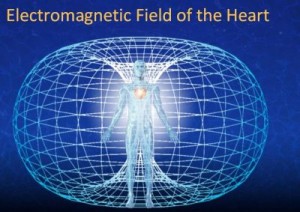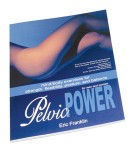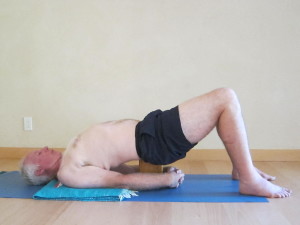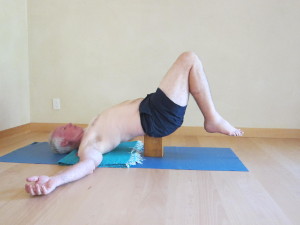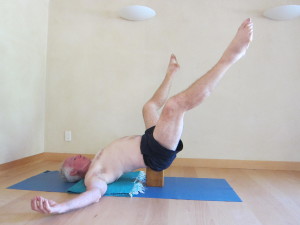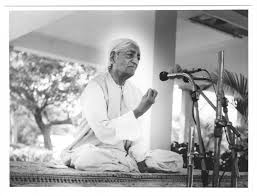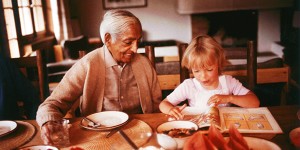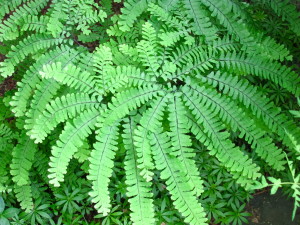One of the fascinating joys of the awakening process is the discovery of another brilliant and charismatic teacher who captures this amazing moment in unique and deeply insightful ways. I am a bit late to the party with my Irish Catholic brother John O’Donohue, who very unfortunately for those of us still here, passed on in 2008. But, wow, is he is opening the eyes of my soul in unimagined ways with his amazing imagery and use of language. As his brother Pat says in the introduction to “Four Elements: Reflection on Nature, “he wrestled the terms of reference that were used to think about ‘soul’ from the religious institutions. He carried them outdoors to the landscape and let them free among the elements. Here they danced their dream of possibility…”
He reminds me a lot of one of my other mentors, Thomas Berry. Both were Catholic priests and scholars who found tremendous spiritual depth in Creation, the manifest world of earth, water, fire and air. While not formally a monk, John also found deep healing in solitude. The powerful forces of Mother Nature shaping the landscape on the western coast of Ireland were his inspiration, providing an invitation to plunge into the inner world of mystery beyond the seen and the known. Without needing the formality of asana, he knew the body to be a gateway to the soul, that the body is immersed in the soul, and not the other way around.
He lived a life of integral spirituality with vitality and joy. And he was at home with the deep pain of loss and despair and other afflictions of the human psyche and soul. To John, all is sacred, all holy. To lead a good life, all one requires is solitude and friendship; longing and belonging; being deeply engaged with one’s own inner world, and deeply engaged in sharing that journey of self discovery with others. And to recognize that even on the inner journey one takes alone, we can befriend all we encounter. There is no ‘other’.
Here are some of my favorite observations from John.
From Anam Cara: (Irish for ‘soul friend’ or, friend to your soul)
“The Celtic mind was not burdened by dualism. It did not separate what belongs together. The Celtic imagination articulates the inner friendship that embraces Nature, divinity, underworld and human world as one. The dualism that separates the visible from the invisible, time from eternity, the human from the divine, was totally alien to them.”
“Humans are new here. Above us, the galaxies dance out toward infinity. 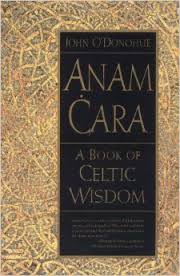 Under our feet is ancient earth. We are beautifully molded from this clay. Yet the smallest stone is millions of years older than us. In your thoughts, the silent universe seeks echo.”
Under our feet is ancient earth. We are beautifully molded from this clay. Yet the smallest stone is millions of years older than us. In your thoughts, the silent universe seeks echo.”
“If we become addicted to the external, our interiority will haunt us. We will become hungry with a hunger no image, person or deed can still. To be wholesome, we must remain truthful to our vulnerable complexity. In order to keep our balance, we need to hold the interior and exterior, visible and invisible, known and unknown, temporal and eternal, ancient and new, together. No one else can undertake this task for you. You are the one and only threshold of an inner world. This wholesomeness in holiness. To be holy is to be natural, to befriend the worlds that come to balance in you. Behind the facade of image and distraction, each person is an artist in this primal and inescapable sense. Each one of us is doomed and privileged to be an inner artist who carries and shapes a unique world.”
“Human presence is a creative and turbulent sacrament, a visible sign of invisible grace. Nowhere else is there such intimate and frightening access to the mysterium. Friendship is the sweet grace that liberates us to approach, recognize and inhabit this adventure. … Friendship is a creative and subversive force. It claims that intimacy is the secret law of life and the universe. The human journey is a continuous act of transfiguration. If approached in friendship, the unknown, the anonymous, the negative and the threatening gradually yield their secret affinity with us.”
‘Silence is a great friend of the soul; it unveils the riches of solitude. It is very difficult to reach that quality of inner silence. You must make a space for it so that it may begin to work for you. In a certain sense, you do not need the whole armory and vocabulary of therapies, psychologies and spiritual programs. If you have a trust in and an expectation of your own solitude, everything that you need to know will be revealed to you.”
“At the deepest level of the human heart, there is no simple singular self. Deep within, there is a gallery of different selves. Each one of these figures expresses a different part of your nature. Sometimes they will come into contradiction and conflict with other. If you meet these contradictions only on the surface level, this could start an inner feud that could haunt you all the days of your life. They are in a permanent war zone and have never 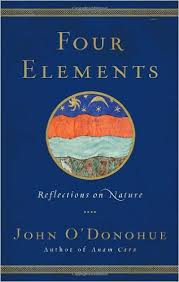 managed to go deeper to the hearth of kinship, where the two forces are not enemies, but reveal themselves as different sides of the one belonging.”
managed to go deeper to the hearth of kinship, where the two forces are not enemies, but reveal themselves as different sides of the one belonging.”
From “Four Elements”
“How can people be so sensitive to the dignity and independence of landscape?….Landscape has a vast and wonderful presence. … But landscape is not merely extensive; it is full of opaque depths. The depths of landscape reach down into eternities of silence and darkenss. But they are not the hopeless depths of a black inferno, for at their ultimate level they rest upon the 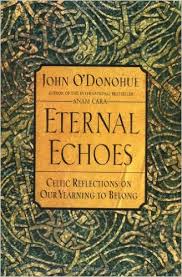 tender emptiness of the cosmos.”
tender emptiness of the cosmos.”
From “Eternal Echoes”
A Blessing
May you listen to your longing to be free,
May the frames of your belonging be large enough
for the dreams of your soul.
May you arise each day with a voice of blessing
whispering in your heart that something good is
going to happen to youMay you find a harmony between your soul and
your life,
May the mansion of your soul never become a haunted place,
May you know the eternal longing which lives at the heart of time
May there be kindness in your gaze when you look within,
May you never place walls between the light and yourself.
May your angel free you from the prisons of guilt, fear, disappointment and despair
May you allow the wild beauty of the invisible world to gather you, mind you, and
embrace you in belonging.


